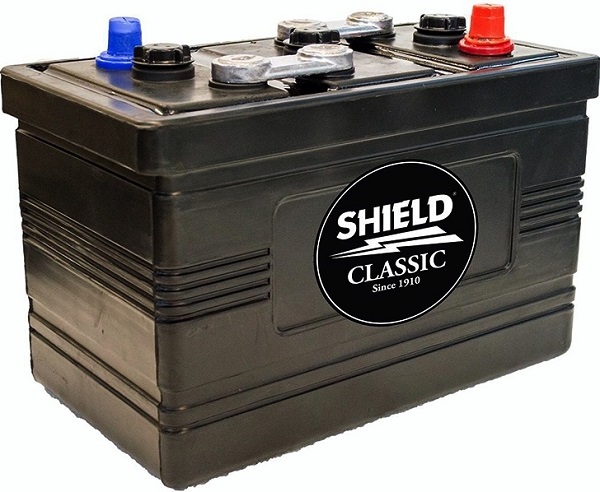
48 Volt vs. 52 Volt E-Bike Battery: Which is Better?
March 28, 2023When choosing an electric bicycle battery, there are two main factors to consider: voltage and capacity. Voltage refers to the amount of power the battery can deliver, while capacity refers to the amount of energy the battery can store. The most common voltage for electric bicycle batteries is 48 volts. However, there are also 52 volt batteries available. 52 volt batteries have a higher voltage, which means they can deliver more power to the motor.
Here are some of the advantages and disadvantages of using 48 volt and 52 volt electric bicycle batteries:
48 Volt Battery Advantages:
- Lower cost
- Longer battery life
- More compatible with existing electric bicycles
48 Volt Battery Disadvantages:
- Less power
- Slower top speed
- Not as good for hills
52 Volt Battery Advantages:
- More power
- Faster top speed
- Better for hills
52 Volt Battery Disadvantages:
- Higher cost
- Shorter battery life
- Less compatible with existing electric bicycles

To understand why batteries come in these 12-volt increments to begin with, we need to look at the history of electric bicycles. In the past, electric bicycles used lead-acid batteries, which are heavy and weak and don’t last long. These batteries had cells rated at about 2 volts, which made it easy to put them together in groups of six to make 12-volt batteries. From there, increments of 24, 36, and 48 volts were common in the e-bike world.
However, in the last five to 10 years, there has been a shift from lead-acid batteries to lithium batteries, which are much lighter, can last much longer, and are more energy-dense. The problem is that lithium batteries don’t always fit nicely into these 12-volt increments that were already in place due to the lead-acid days. That’s because lithium battery cells are rated at a higher voltage, about 3.6 volts per cell, not 2 volts per cell.
When it comes to 36-volt batteries, this isn’t much of an issue, as you can take ten 3.6-volt cells and put them in series to get 36 volts. However, when it comes to 48-volt batteries, the general convention has been to use 13 cells in series. But if you do the math, 13 cells multiplied by 3.6 volts per cell gives you 46.8 volts per battery, which is less than 48 volts. To solve this problem, e-bike manufacturers have taken to using a nominal voltage of 3.7 volts per cell instead of 3.6 volts. With this change, a 13s battery can be called a 48-volt battery, even though its actual voltage is 48.1 volts.
The problem with this approach is that the voltage of the battery changes during the discharge curve, starting at about 54.6 volts when fully charged and dropping down to the low 40s or even 39 volts when fully discharged. This means that most of the time, you’re using a 48-volt battery that’s actually operating below 48 volts, which could result in less power compared to a lead-acid battery.

An interesting solution that has become popular in the last few years is to create a 52-volt battery by adding one more cell in series. Instead of building a 13s battery, you build a 14s battery. This gives you an extra 3.6 volts, which, when multiplied by 14, gives you a 50.4-volt battery (using 3.6 volts nominal voltage) or a 51.84-volt battery (using 3.7 volts nominal voltage). Rounded up, this is where the name 52-volt battery comes from.
The advantages of a 52-volt battery are that it provides more power and speed. Power, measured in watts, is volts times amps. If the amps stay the same, but the volts increase, so does the watts. This means that a 52-volt battery can provide more power than a 48-volt battery. Additionally, a 52-volt battery can increase the speed of your electric bicycle since it can deliver more power to the motor.
In conclusion, when choosing between a 48-volt and a 52-volt electric bicycle battery, it ultimately comes down to personal preference and the speed you plan to travel at. With a higher voltage, the motor can spin faster, which translates to a higher top speed. So, if you’re someone who wants more power and speed out of your electric bicycle, a 52 volt battery may be worth considering.
Another advantage of a 52 volt battery is that it may provide better performance on hills and inclines. When you’re climbing a hill, you’re putting more strain on the motor and battery, and having that extra voltage can help provide more torque and power to get up the incline more easily.
One potential drawback of a 52 volt battery is that it may be less compatible with certain electric bicycle components. Some electric bicycles are designed specifically for use with 48 volt batteries, and using a higher-voltage battery may cause issues with the controller or other components. It’s important to check with the manufacturer or a qualified electric bicycle technician before upgrading to a 52 volt battery to ensure that your bike is compatible and that the upgrade won’t cause any damage.
In terms of cost, 52 volt batteries may be slightly more expensive than 48 volt batteries, but the price difference is not usually significant. However, it’s important to note that upgrading to a higher voltage battery may also require upgrading other components, such as the controller or motor, which can add to the overall cost of the upgrade.
Ultimately, whether a 48 volt or 52 volt battery is better for your electric bicycle depends on your specific needs and preferences. If you’re happy with the performance of your 48 volt battery and don’t feel the need for more power or speed, there’s no need to upgrade. However, if you want to squeeze more performance out of your electric bicycle, a 52 volt battery may be worth considering. Just be sure to do your research and make sure the upgrade is compatible with your bike before making the investment.









